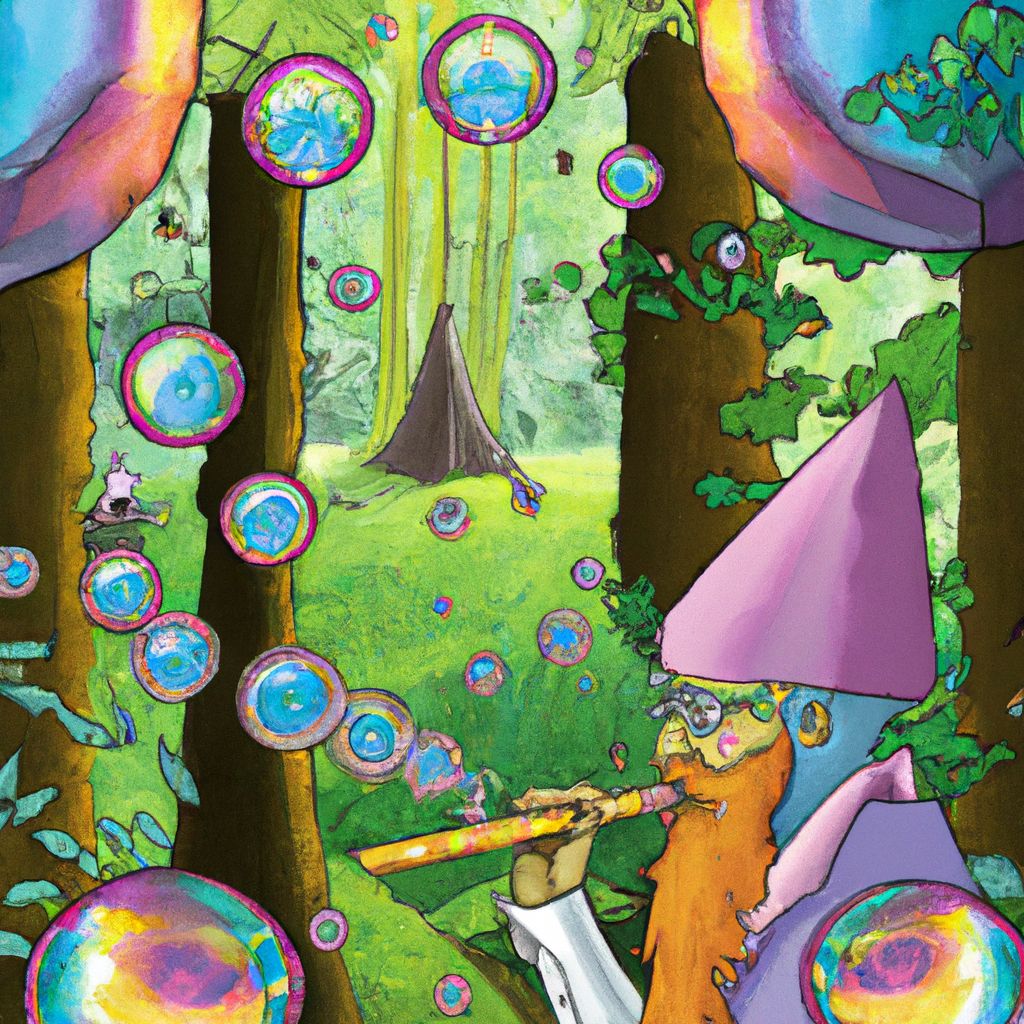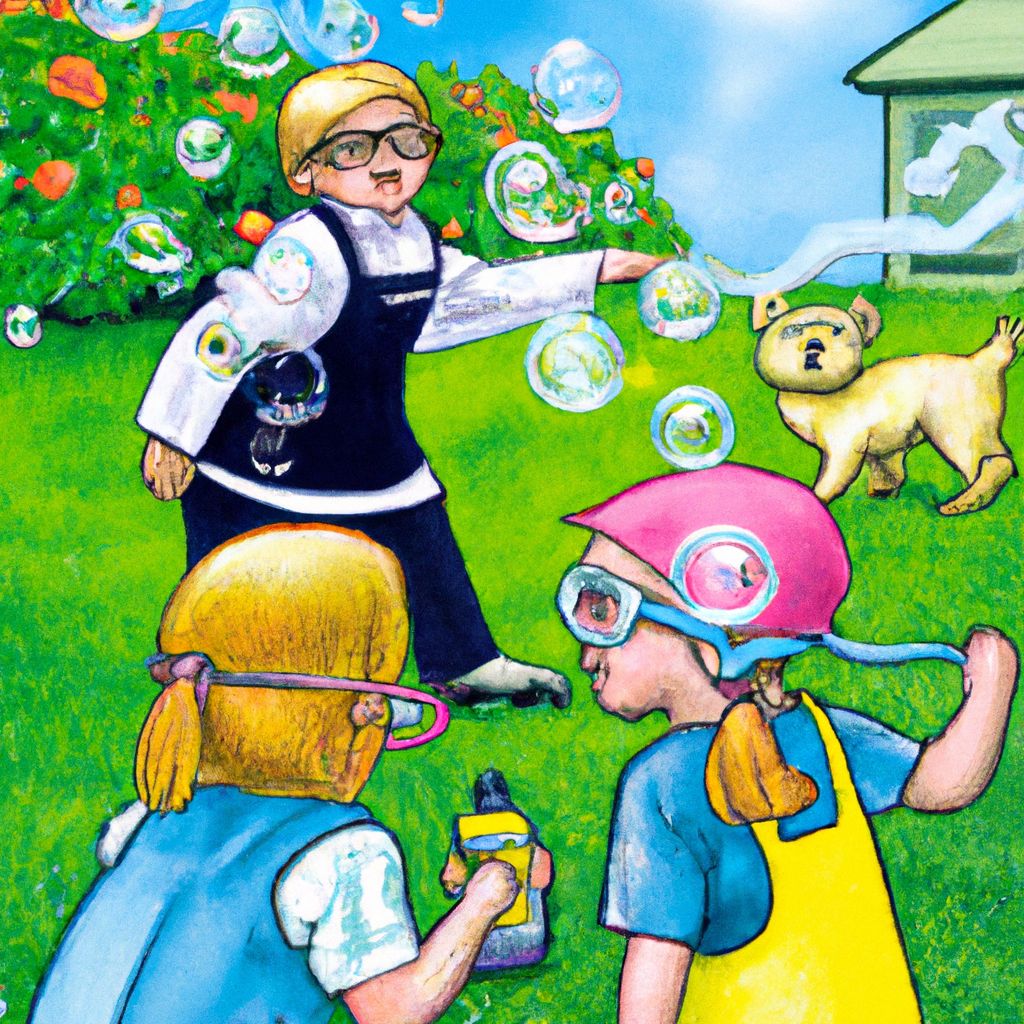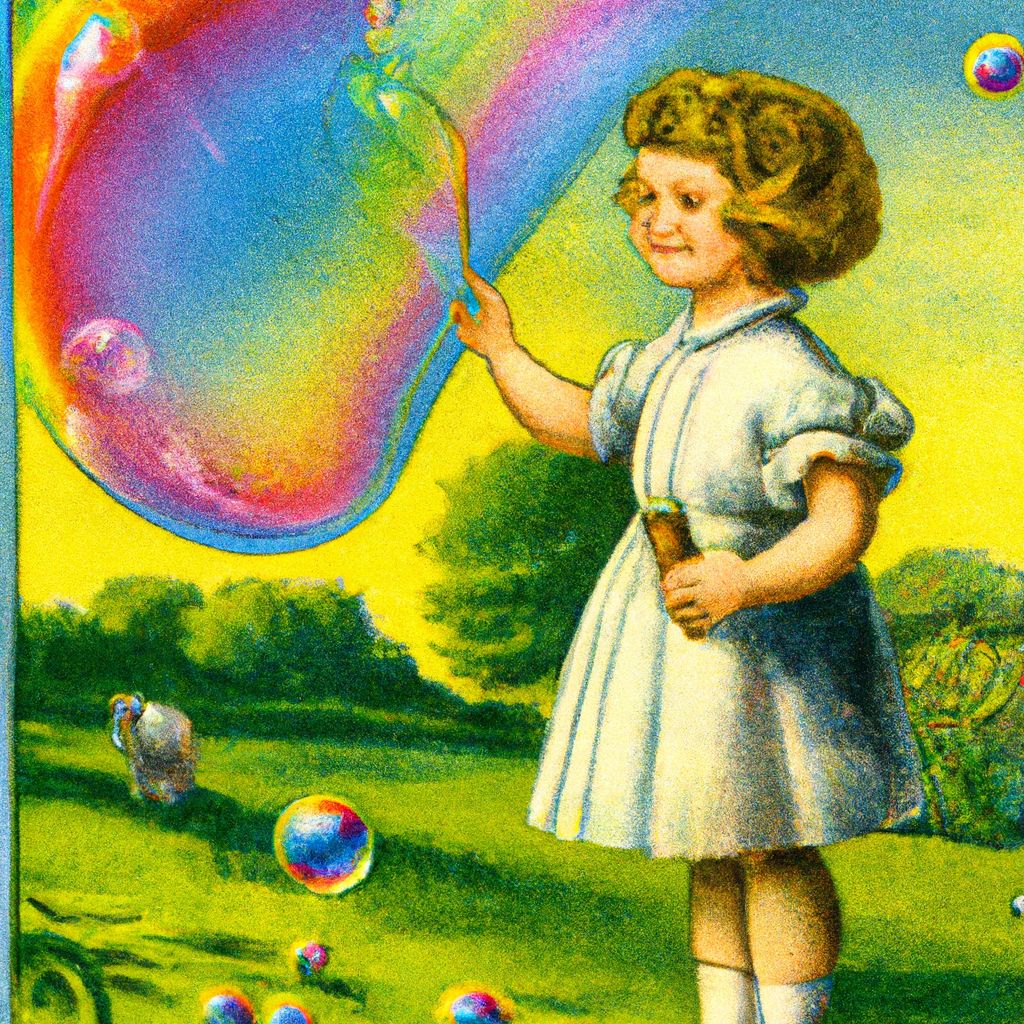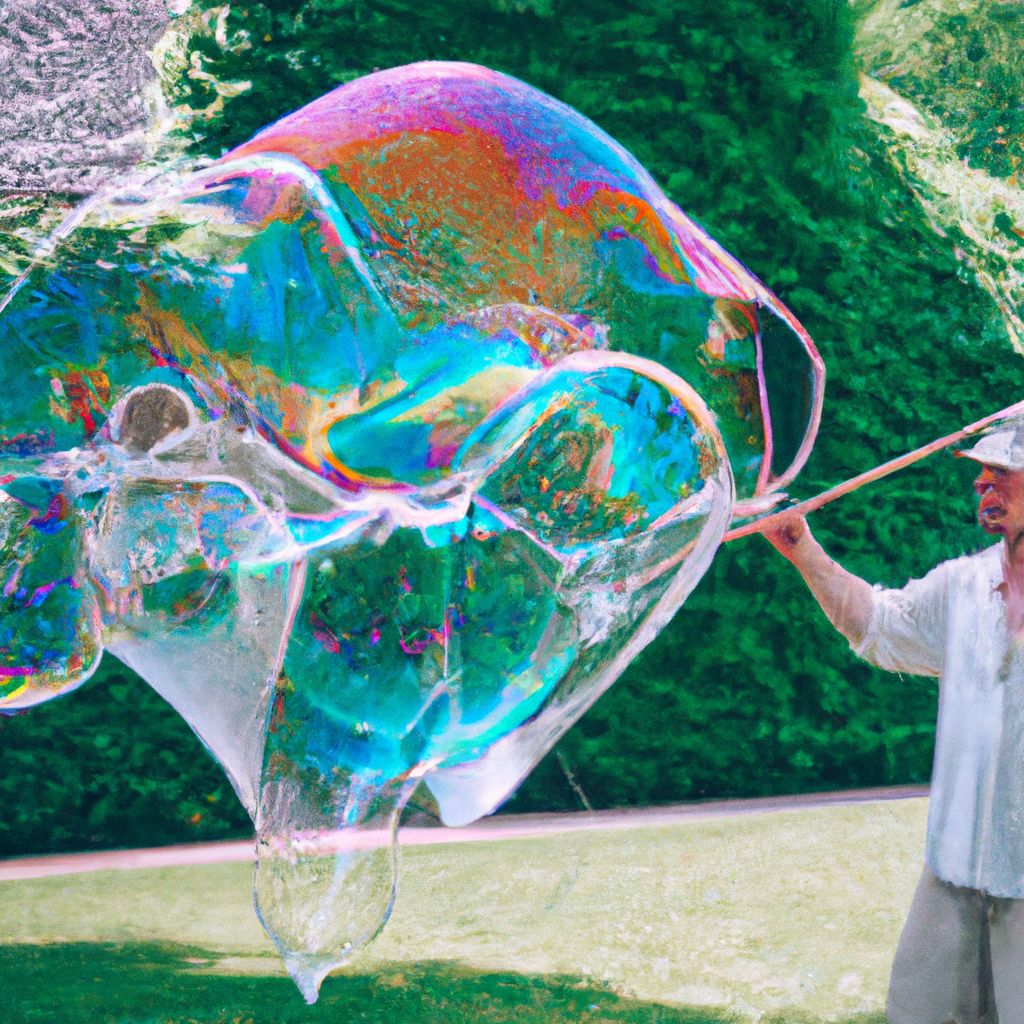- Introduction to Bubble Blowing
- Understanding Bubble Solution
- Choosing the Right Bubble Wand
- Basic Bubble Blowing Techniques
- Creating Larger Bubbles
- Advanced Bubble Blowing Shapes
- Bubble Blowing Tricks and Tips
- Safety Precautions and Cleanup
- Conclusion: Practice Makes Perfect
Introduction to Bubble Blowing

Bubble blowing is an enchanting activity that has captivated individuals of all ages for generations. The sheer delight of watching a bubble form and float away on the breeze is a simple pleasure that transcends age, culture, and time. For beginners, the appeal of bubble blowing lies in its simplicity and the immediate gratification it offers. It's an activity that does not require expensive equipment or extensive training, making it accessible to everyone.
At its core, bubble blowing is about creating a thin film of soap and water that traps air inside, forming a spherical and iridescent orb that captures the imagination. The basic concept might be simple, but there is a subtle art to perfecting the technique, which involves understanding the science of soap film structures and the dynamics of air flow. As we delve deeper into the techniques, beginners will learn the nuances that can transform a basic bubble into a captivating display of light and color.
Setting the stage for what's to come, we will explore various techniques aimed at helping novices master the craft of bubble blowing. From the choice of solution to the intricacies of wand movements, each element plays a crucial role in the bubble's creation. The following content will guide beginners through the initial steps of this whimsical journey, ensuring that the magic of bubble blowing is within everyone's reach.
Understanding Bubble Solution

The foundation of any bubble-blowing endeavor is the bubble solution. The right solution is crucial for producing bubbles that are not only sizeable but also resilient and long-lasting. The ingredients in a bubble solution determine its viscosity and surface tension, two factors that significantly affect the bubble's integrity and lifespan.
A good bubble solution typically contains a combination of water, soap, and glycerin or corn syrup. The soap helps to lower the surface tension of water, making it easier to form bubbles, while glycerin or corn syrup extends the life of the bubble by strengthening the soap film. Store-bought solutions are formulated to create a consistent and reliable experience, but homemade solutions can be just as effective and offer the added benefit of customization.
For those interested in crafting their own mixture, here is a simple recipe for a homemade bubble solution:
Homemade Bubble Solution Recipe:
- 6 cups distilled water (tap water can be used but may require adjustment)
- 1 cup dishwashing liquid (non-antibacterial and non-moisturizing for the best results)
- 1 tablespoon glycerin or ¼ cup corn syrup (to increase bubble longevity)
To create the solution, mix the ingredients gently to avoid creating foam. The soap-to-water ratio is vital; too much soap can make the solution too heavy, while too little may not allow bubbles to form properly. The addition of glycerin or corn syrup helps to stabilize the bubbles and prevent them from popping too quickly. For optimal performance, let the solution sit for a few hours or even overnight, as this can improve bubble quality.
Beginners should note that the quality of the dish soap and the type of water used can affect the outcome. Hard water or soap with additives can impact the film strength and bubble size. Therefore, it's worth experimenting with different brands of soap and types of water to discover the perfect blend for your bubble blowing adventures.
Choosing the Right Bubble Wand

The bubble wand is a crucial tool in the bubble blower's arsenal, and selecting the right one can greatly enhance the experience. Wands come in all shapes and sizes, from the classic plastic rings found in store-bought bottles to creative homemade alternatives. The variety of wands allows for different types of bubbles, from small and plentiful to large and wondrous.
When choosing a bubble wand, consider the following factors:
- Size: The size of the wand opening determines the size of the bubble. Larger openings will produce larger bubbles, while smaller ones are best for creating a stream of tiny bubbles.
- Shape: While traditional wands are circular, wands can come in many shapes, such as stars, hearts, or even complex geometric patterns. The shape can add a fun twist to your bubbles but doesn't necessarily impact the bubble's round form after it is blown.
- Material: Most commercial wands are made from plastic, which is durable and easy to clean. Homemade wands can be crafted from wire hangers, string, or even natural materials like willow branches. The material should be smooth to allow for a consistent film of bubble solution.
For those looking for a DIY approach, creating a wand from a wire hanger can be a simple yet effective choice. Straighten the hanger and bend it into a circular shape, leaving a portion as a handle. Similarly, straws can be connected to create a frame and dipped into the solution to generate bubbles. The versatility of homemade wands allows bubble enthusiasts to experiment with different designs and discover unique patterns in bubble creation.
The wand's material can also influence the bubble's quality. Plastic wands are less likely to have imperfections that can disrupt the soap film, while a smooth wire can provide a more flexible shape but may require more finesse to avoid popping the bubble during formation. The key is to find a balance between the wand's material and its ease of use, ensuring that the process is as enjoyable as the outcome.
Ultimately, the best wand is one that fits comfortably in your hand, can be easily dipped into your bubble solution, and produces the size and quantity of bubbles you desire. Whether you opt for a store-bought wand or craft your own, the right tool can make all the difference in your bubble-blowing success.
Basic Bubble Blowing Techniques

Mastering the basic techniques of bubble blowing is essential for beginners to enjoy and succeed in creating bubbles. The process starts with the proper dipping of the wand into the solution. Submerge the wand entirely, ensuring that the entire ring or shape is coated evenly. When you lift the wand from the solution, do so slowly and steadily to avoid dripping and to maintain a consistent film.
The right amount of liquid on the wand is crucial. Too much solution can weigh the bubble down, causing it to burst prematurely. If too little solution is used, the bubble may not form at all. Aim for a thin, even layer across the wand's shape. This balance allows air to be trapped effectively, forming a stable bubble.
As for the blowing technique, it is important to blow gently and steadily. A harsh, quick breath can burst the film, while too soft a breath may not create a bubble. Beginners should practice blowing with a controlled, even stream of air, adjusting as necessary based on the wand size and the desired bubble size.
Here are some tips for effective bubble blowing:
- Breathing Techniques: Use your diaphragm for controlled breathing, similar to techniques used in singing or playing wind instruments. This provides a more regulated airflow and helps avoid bursts of air that can pop the bubble film.
- Positioning the Wand: If you are outdoors, pay attention to the wind direction. Position the wand so that the wind assists in bubble formation, allowing the natural airflow to carry the bubble away from the wand. In the absence of wind, you may need to move the wand gently through the air after blowing to help the bubble detach and float away.
The art of bubble blowing also involves a bit of patience and practice. Beginners should not be discouraged by initial failures but should use them as learning experiences. Adjust the amount of solution, your breathing, and wand positioning until you find what works best for you. With time and practice, you'll develop a feel for the subtle interplay between these factors and enjoy the delicate dance of bubble blowing.
Creating Larger Bubbles

Blowing larger bubbles is an impressive feat that requires a bit of technique and understanding of the physics behind bubble formation. To achieve grandiose bubbles, the approach must be even more nuanced and deliberate than with smaller bubbles.
First and foremost, a gentle and consistent airflow is imperative. The breath used to inflate a larger bubble must be smooth and steady, allowing the soap film to expand gradually without breaking. Avoid sharp exhales; instead, use a sustained, controlled breath, as if you are trying to fog up a window gently. This will help prevent the film from stretching too quickly and bursting.
Moving the wand smoothly is also essential when attempting larger bubbles. As you blow, you should slowly and steadily move the wand away from your body, which helps the bubble to grow and thin out the soap film uniformly. Sudden movements can disrupt the air around the bubble, leading to a collapse of the delicate structure.
To create a stable environment for the bubble to grow, consider the following:
- Perform bubble blowing in a space with minimal air currents, as gusts of wind can burst the bubble or cause it to detach prematurely.
- Ensure that the environment is not too dry, as humidity helps to keep the bubble film flexible and less likely to pop. On dry days, you might consider using a humidifier or choosing a naturally humid environment like a bathroom after a shower.
Moreover, the technique for detaching a larger bubble from the wand differs from that of a smaller bubble. Once the bubble has reached the desired size, stop blowing and carefully close the wand to seal the bubble. If there is no wind to carry the bubble away, you may need to give a gentle wave of the wand in the direction you wish the bubble to travel.
It's important for beginners to remember that creating larger bubbles also means that the soap film is thinner and more prone to popping. Patience and a steady hand are key, and with practice, you'll find the right rhythm and motion to consistently produce awe-inspiring bubbles.
Advanced Bubble Blowing Shapes

For those who have mastered the basics and are ready to dive into more advanced bubble blowing, creating unique shapes adds an extra layer of challenge and excitement. Shapes like clusters, long tubes, and the mesmerizing bubble-inside-a-bubble require specific techniques and a bit of finesse.
Creating Bubble Clusters:
- Begin with a wand that has multiple openings or a cluster of holes. These can be store-bought or homemade.
- Dip the wand into the solution, ensuring all openings are fully coated.
- Blow gently and evenly, just as you would for a single bubble, but with a bit more airflow to fill multiple films.
- Detach the cluster by stopping your breath and moving the wand away from your face slowly, allowing the individual bubbles to cling together as they float away.
Blowing Long Bubble Tubes:
- Use a wand with a large, elongated opening or create one by bending a wire into an elongated oval.
- Dip the wand into the solution, and ensure it's fully coated.
- Blow a steady stream of air into the elongated film while gently moving the wand in a straight line away from your body, extending the bubble into a tube shape.
- To release the tube, stop blowing and give a quick twist of the wand to seal the ends.
Creating a Bubble-Inside-a-Bubble:
- First, blow a large bubble and detach it from the wand.
- Quickly, while the bubble is still in the air, wet the tip of a straw or a smaller wand in the bubble solution.
- Carefully insert the wet straw or wand into the center of the floating bubble without popping it.
- Gently blow into the straw or wand to form a smaller bubble inside the larger one.
- Withdraw the straw or wand slowly to leave the smaller bubble nested within the larger one.
When attempting these advanced shapes, visualization is key. Envision the bubble forming as you blow, and use your breath and wand movement to guide the soap film into the desired shape. Patience is paramount, as these techniques may require several attempts to perfect. The bubble-inside-a-bubble, in particular, is a delicate maneuver that demands a gentle touch and precise control.
Remember, the quality of your bubble solution and environmental factors like wind and humidity will continue to play a role in your success with these advanced shapes. By experimenting with these techniques and adjusting your approach as needed, you'll be able to create a range of spectacular and sophisticated bubble formations.
Bubble Blowing Tricks and Tips

Once beginners have a grasp of the foundational techniques, they can move on to fun tricks that add a flair to their bubble blowing. These tricks not only enhance the enjoyment but also develop dexterity and control over the bubble making process.
Tricks for Beginners:
- Catching Bubbles on the Wand: After blowing a bubble, gently position the wand underneath it and allow the bubble to settle back onto the film. The key is to move slowly to avoid bursting the bubble.
- Combining Bubbles: Blow a large bubble and then carefully blow a smaller one near it. Use the wand to guide the smaller bubble to touch the larger one, and they should combine to form a single, bigger bubble.
- Bouncing Bubbles: Put on a pair of cotton gloves or a glove with a textured surface. Blow a bubble and gently bounce it on your gloved hand. The glove prevents the oils on your skin from popping the bubble, allowing you to perform this trick.
Troubleshooting Tips:
- If bubbles are popping too quickly, try adding more glycerin or corn syrup to the solution to strengthen the bubble film. Also, ensure your hands and wand are clean and free from oils or residue.
- For bubbles that won't form, check that you are not moving the wand too quickly through the air and that you are blowing gently. Also, make sure the bubble solution fully covers the wand.
- If bubbles are sticking to the wand, try wetting the wand more thoroughly before dipping it into the solution. A dry spot on the wand can cause the bubble to burst upon contact.
Beginners should remember that bubble blowing is as much about patience and practice as it is about fun. Each failed bubble is an opportunity to learn and adjust your technique. With these tricks and tips, you can turn the simple act of blowing bubbles into a captivating display of skill and dexterity.
Safety Precautions and Cleanup

Safety is paramount in all recreational activities, including bubble blowing, especially when engaging young children. It is essential to ensure that the bubble solution is used correctly and responsibly to prevent accidents.
The following safety precautions should be observed:
- Avoid Ingestion: Supervise young children to ensure they do not drink the bubble solution. Though most commercial bubble solutions are non-toxic, ingesting them can cause an upset stomach or more severe health issues.
- Keep Away from Eyes: Bubble solution can irritate the eyes. If the solution does contact the eyes, rinse immediately with plenty of clean water. Keeping a towel handy can be useful for quick cleanups.
- Non-Slip Surfaces: Spilled bubble solution can create slippery surfaces. To prevent falls, lay down a non-slip mat or towel when blowing bubbles indoors, and choose grassy or non-slippery areas outdoors.
- Proper Storage: Store bubble solution in a place where children cannot access it without adult supervision, and ensure it is properly sealed to avoid spills.
When it comes to cleanup, the following tips can help manage the mess and maintain a safe environment:
- Keep a bucket of clean water or a damp cloth nearby to quickly wipe up spills.
- Use eco-friendly bubble solutions that are easier to clean and less likely to leave a residue.
- After bubble blowing, thoroughly wash any toys or wands used to prevent sticky residues.
- If bubble solution spills on a hard surface, clean it up immediately with hot soapy water to prevent it from becoming slippery.
By taking these safety precautions and cleanup tips into account, bubble blowing can be a safe and enjoyable activity for enthusiasts of all ages. Remember, responsible practices ensure that the fun of bubble blowing is not overshadowed by preventable mishaps.
Conclusion: Practice Makes Perfect

Embarking on the journey of bubble blowing is much like acquiring any new skill—it flourishes with regular practice. Patience and persistence are indeed key, as each attempt brings valuable insights that refine your technique. Embrace the trial and error process, and don't let the occasional burst bubble deter your enthusiasm.
As you dedicate time to practicing, you will notice a gradual improvement in your ability to create bubbles of various sizes and shapes, execute advanced techniques, and perhaps even develop some tricks of your own. Remember, the process should be as enjoyable as the outcome. The world of bubble blowing is not just about the end product but about the serene moments spent in pursuit of that perfect orb of soap and water.
Share your bubble blowing experiences with friends, family, or the burgeoning community of bubble enthusiasts online. Exchange tips, celebrate successes, and even laugh at the foibles. After all, bubble blowing is a delightful activity meant to bring joy and wonder to both the blower and the audience.
So, grab your wand and bubble solution, head outside—or indoors if the weather isn't cooperative—and lose yourself in the magic of bubbles. Each bubble, no matter how fleeting, is a reminder of the simple pleasures that life offers, and with every breath and movement, you contribute to the ephemeral tapestry of the air around you.





